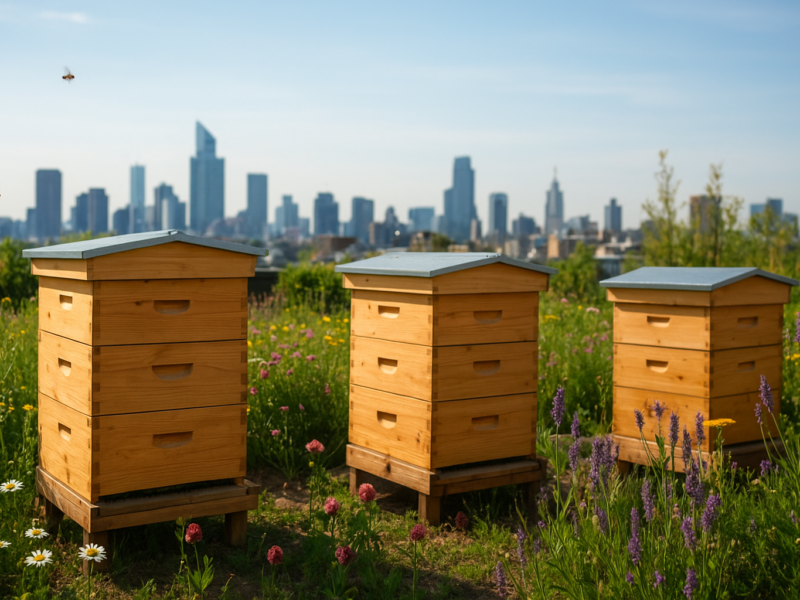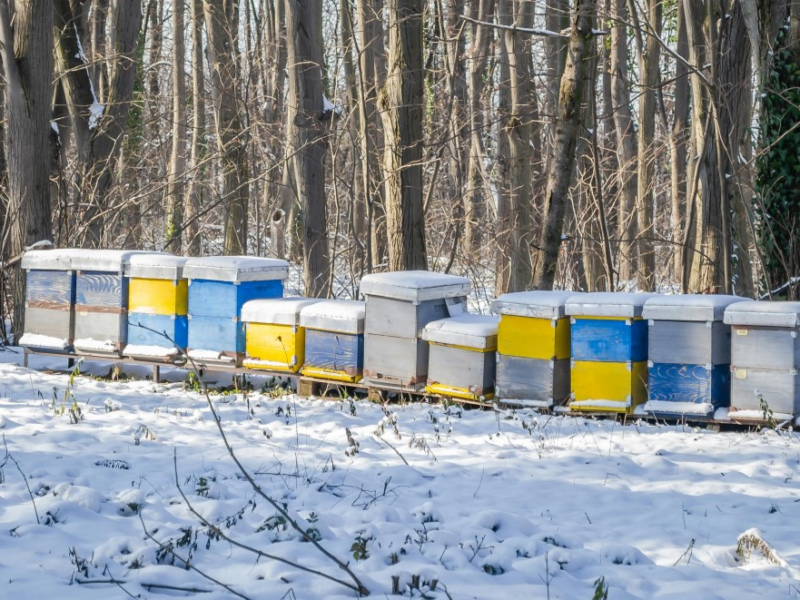Introduction: Why Seasonal Care Matters
Beekeeping isn’t a “set it and forget it” activity. Just like gardening or farming, it follows the rhythm of the seasons. Each time of year presents unique challenges and opportunities for both bees and beekeepers. Proper seasonal hive management ensures strong, productive colonies that not only survive but thrive year after year.
In this guide, we’ll break down exactly what you need to do for your hives during spring, summer, fall, and winter—so your bees stay healthy and your honey harvests are plentiful.
Spring Hive Management
Spring is the season of renewal, and for bees, it’s the time when colonies rapidly expand. As a beekeeper, your role is to support this growth and prepare for the honey flow.
Key Tasks in Spring:
- First Inspection: On a warm, sunny day, open the hive to check colony strength, food stores, and queen activity.
- Feeding if Necessary: Provide sugar syrup if honey stores are low.
- Space for Growth: Add supers or extra brood boxes as the colony expands.
- Swarm Prevention: Bees reproduce naturally by swarming. Monitor for queen cells and take measures like splitting hives if needed.
- Pest Management: Begin treatments for Varroa mites early.
✅ Goal: Build a strong, healthy colony ready for the main nectar flow.
Summer Hive Management
Summer is when colonies reach peak population and honey production is at its highest. This is also when pests and diseases are most active.
Key Tasks in Summer:
- Regular Inspections: Check every 7–10 days for space, brood health, and signs of swarming.
- Honey Super Management: Add supers as needed to prevent overcrowding.
- Pest Monitoring: Watch for Varroa mites, small hive beetles, and wax moths.
- Ventilation: Hot temperatures can stress bees; ensure good airflow in the hive.
- Harvesting Honey: Only take surplus honey, leaving enough for the bees.
✅ Goal: Maintain colony health and maximize honey production.
Fall Hive Management
Fall is about preparing bees for winter survival. Colonies begin to shrink, and your job is to ensure they have enough food and protection.
Key Tasks in Fall:
- Food Stores: Bees need 60–90 pounds (27–40 kg) of honey for winter survival, depending on climate. Supplement with sugar syrup if stores are low.
- Reducing Hive Size: Remove empty supers to make the hive more compact.
- Pest & Disease Treatments: Apply final Varroa mite treatments.
- Insulation: Add hive wraps or insulation boards in colder regions.
- Entrance Reducers: Narrow entrances to keep out robbers and pests.
✅ Goal: Create a well-provisioned, compact, and pest-free colony ready for the cold months.
Winter Hive Management
Winter is the quiet season for bees—but beekeepers still play a role in ensuring survival. Bees form a cluster and rely on stored honey for warmth and energy.
Key Tasks in Winter:
- Minimal Disturbance: Avoid opening the hive in freezing weather.
- Check Food Supplies: On warmer days, lift the hive to estimate weight. Provide fondant or candy boards if stores are low.
- Moisture Control: Use ventilation to prevent condensation, which can be deadly to bees.
- Protection from Wind & Snow: Ensure hives are stable and shielded from harsh weather.
- Planning for Next Season: Use the downtime to prepare equipment, order bees, and study new techniques.
✅ Goal: Help bees survive winter and emerge strong in spring.
🐝 Related Articles
Year-Round Best Practices
Regardless of the season, these ongoing practices ensure beekeeping success:
- Record Keeping: Track inspections, treatments, and colony progress.
- Pest Control: Stay consistent with mite management strategies.
- Education: Stay updated through courses, books, and local beekeeping associations.
- Networking: Share experiences with fellow beekeepers for support and advice.
Benefits of Proper Seasonal Hive Management
- Stronger Colonies: Healthy bees mean better honey yields.
- Reduced Losses: Prevent colony collapse and winter die-offs.
- Sustainability: Balanced hive care supports pollination and biodiversity.
- Profitability: More honey and products for sale.
FAQs About Seasonal Hive Management
Q1: How often should I inspect my hive?
👉 Every 7–10 days in spring and summer; once or twice a month in fall; minimal checks in winter.
Q2: Can I feed bees in winter?
👉 Yes, with candy boards or fondant, but avoid opening hives too often.
Q3: What’s the biggest mistake beginners make with seasonal care?
👉 Not preparing enough food stores for winter or failing to monitor mites.
Q4: Do bees need extra ventilation in winter?
👉 Yes, to prevent condensation, which is more dangerous than cold itself.
Q5: Should I harvest honey in fall?
👉 Only if bees have more than enough stores. Always leave at least 60–90 pounds.
Conclusion: Becoming a Year-Round Beekeeper
Seasonal hive management is the cornerstone of successful beekeeping. By learning what your bees need in spring, summer, fall, and winter, you’ll ensure stronger colonies, higher honey production, and a rewarding beekeeping journey.
👉 Remember: bees don’t follow a calendar—they follow nature. As a beekeeper, your job is to adapt, observe, and provide the right support at the right time.



